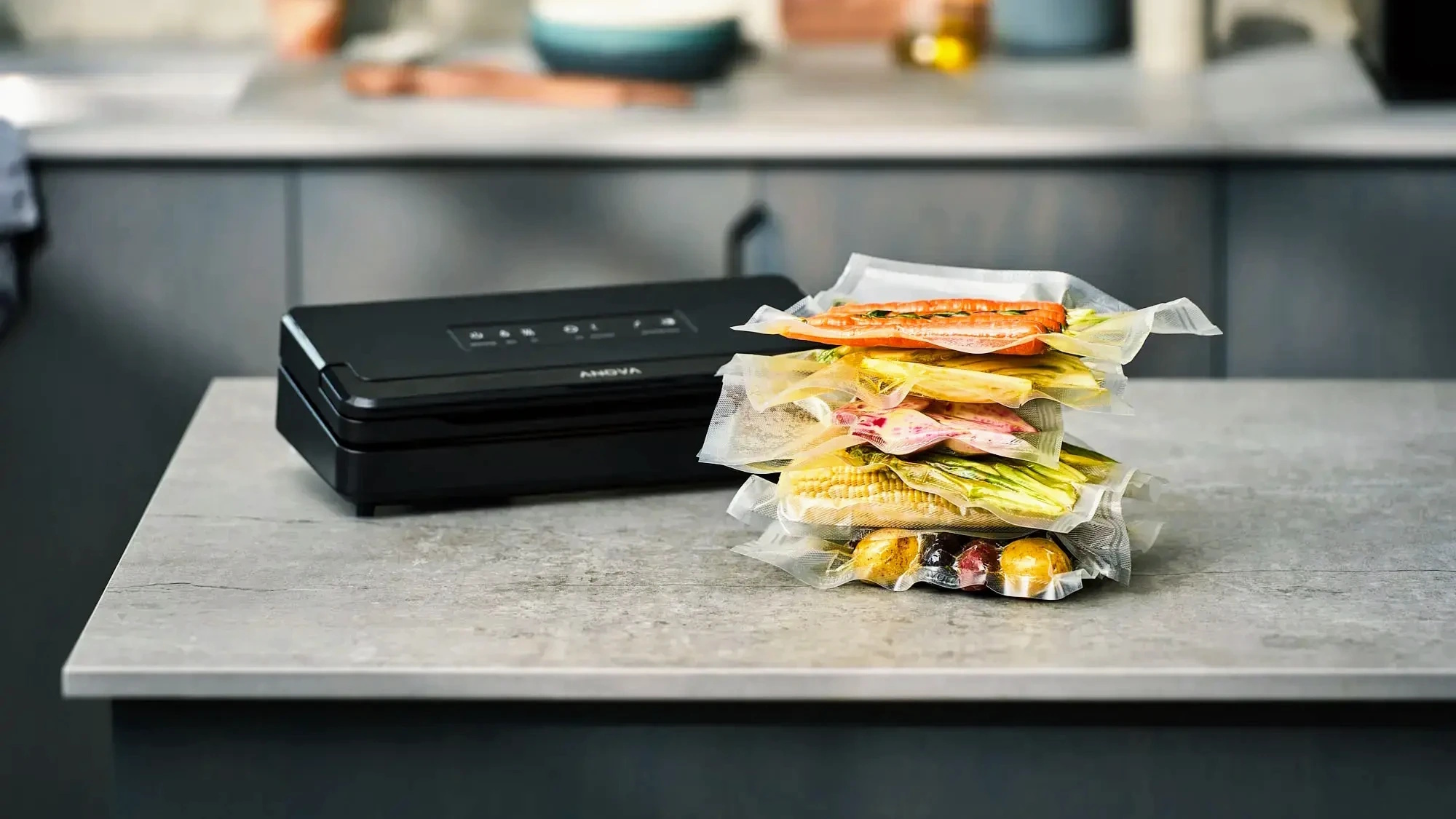The best vacuum food sealers are designed to keep your food longer and reduce food waste. They're great for leftover meals, cheese, fruits, vegetables, fish, meat, and herbs. A food saver can keep food fresh for weeks if it's sealed correctly and stored in the fridge at the right time.
Frozen items can last several months, depending on what you're freezing. That means you won't have to worry about moldy stuff in the back of the fridge.
In a compatible plastic bag, vacuum food sealers can keep leftovers longer thanks to their ability to create an airtight seal around the food. While it sounds high-tech, this tried-and-true method has existed since the 1940s. This seal keeps oxygen out and prevents mold growth. In the 1970s, vacuum food sealers were used for sous vide cooking to intensify flavor.
For sustainability, vacuum food sealers help you preserve food for a more extended period without using chemicals. They also prevent freezer burn, which can affect the quality of your food.
Considering what you eat regularly and want to preserve will help you determine the best vacuum food sealer. There's a food-saver machine for you, whether you're looking for a model with bigger openings to store more stuff or a model with fast suction times.
Check out our guide to the best food processors and blenders to upgrade your cooking kit even more.
The 10 best vacuum food sealers we recommend in 2025
Why you can trust Top Ten Reviews Our expert reviewers spend hours testing and comparing products and services so you can choose the best for you. Find out more about how we test.
Top Ten Reviews is on a mission to review everything we feature in our buyer's guides. Still, while we work hard to make this a reality—or where this isn't possible—some of our guides still feature rankings based on our team's considerable expertise and research.
While we haven't been able to test any of the units in this guide in person, we've instead honed in on top-rated brands and used our knowledge of the best features to help you make the right decision for your home, all for the best price.
The best vacuum food sealer overall
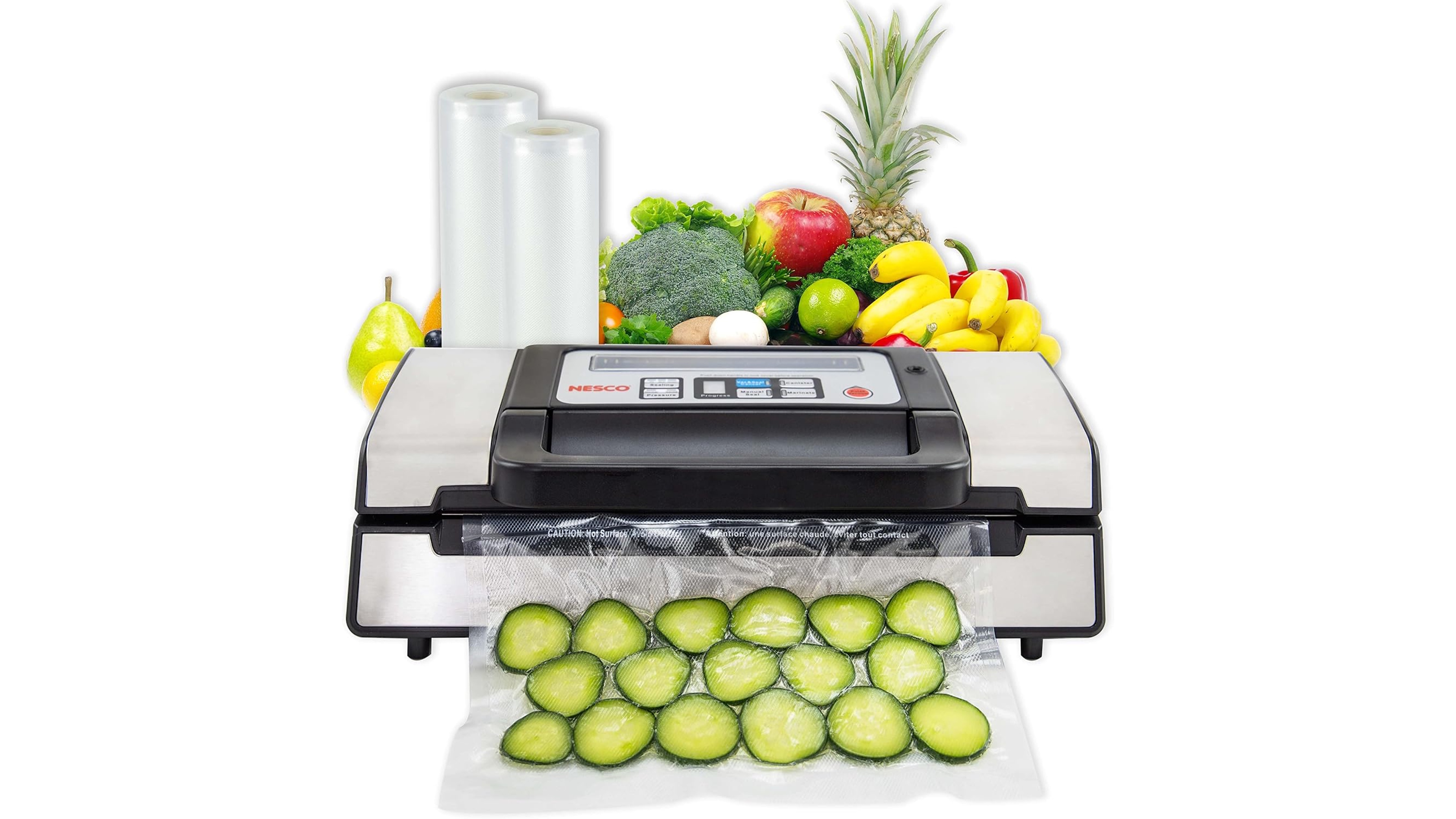
The NESCO VS-12 Deluxe Vacuum Sealer is an excellent option for long-term food preservation and is particularly effective for sous vide cooking, especially with meats.
This model is designed for performance and convenience, featuring three seal settings: Dry, Moist, and Double, along with two vacuum pressure levels: Normal and Gentle. With a 130-watt, 25.1 InHG double vacuum pump, it provides maximum air extraction, even for larger items, keeping food fresh up to five times longer than traditional storage methods.
The vacuum sealer also includes a built-in bag cutter and a roll storage compartment with a transparent window, allowing you to create custom bags. It comes with two rolls: one measuring 8.6" x 9.85" and another at 11.8" x 9.85", so you can start using it immediately. The sealer can accommodate bags up to 11.8" wide.
The double heat seal option makes sure there is extra security when sealing moist or liquid items. NESCO vacuum sealers are known for being user-friendly and effective for storing both dry and wet foods. While many users appreciate the large storage capacity and compact design, some have raised concerns about the seal quality, pricing, and suction strength.
The best budget vacuum food sealer
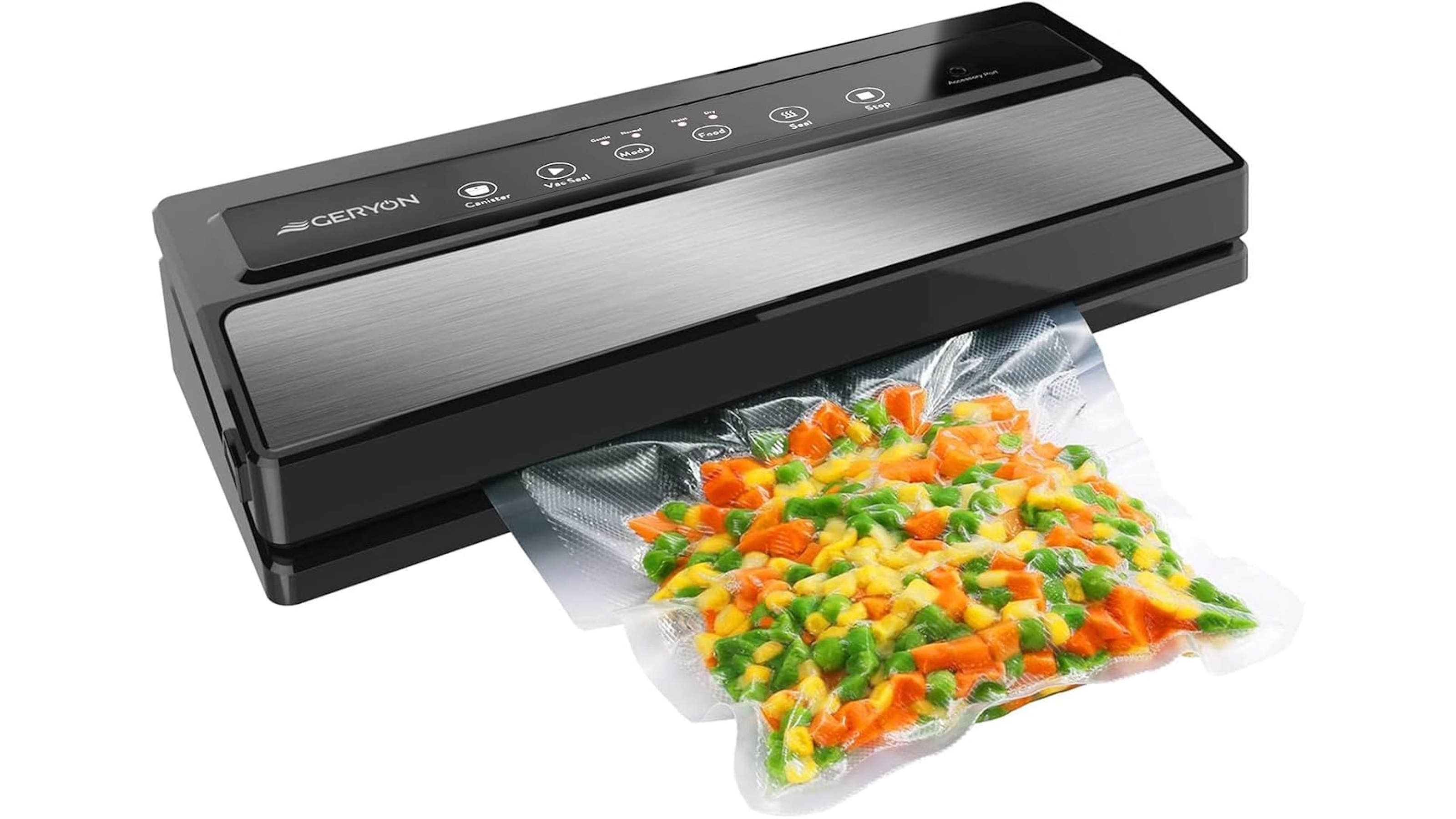
This versatile vacuum food sealer is ideal for sous vide cooking. It is lightweight, budget-friendly, and designed to help you save money while improving your meals. Removing air from specially designed bags prevents freezer burn, spoilage, and food waste, allowing you to eat better and more efficiently.
Geryon vacuum sealers also have the capability to reseal bags of rolls or snacks that do not require a full vacuum seal, thanks to their two sealing modes.
With a compact size and lightweight design, this vacuum sealer can accommodate Geryon or other brand vacuum sealer bags and rolls up to 12 inches in length. It features fully automatic vacuum sealing, soft-touch digital buttons, and LED indicator lights for easy use.
The vacuum sealer comes with an air suction hose, five heat-seal bags (7.8" x 11"), a roll (7.8" x 78"), and a user manual. Many users appreciate its space-saving design and efficiency, although feedback regarding suction power and quality may vary.
The best compact vacuum food sealer
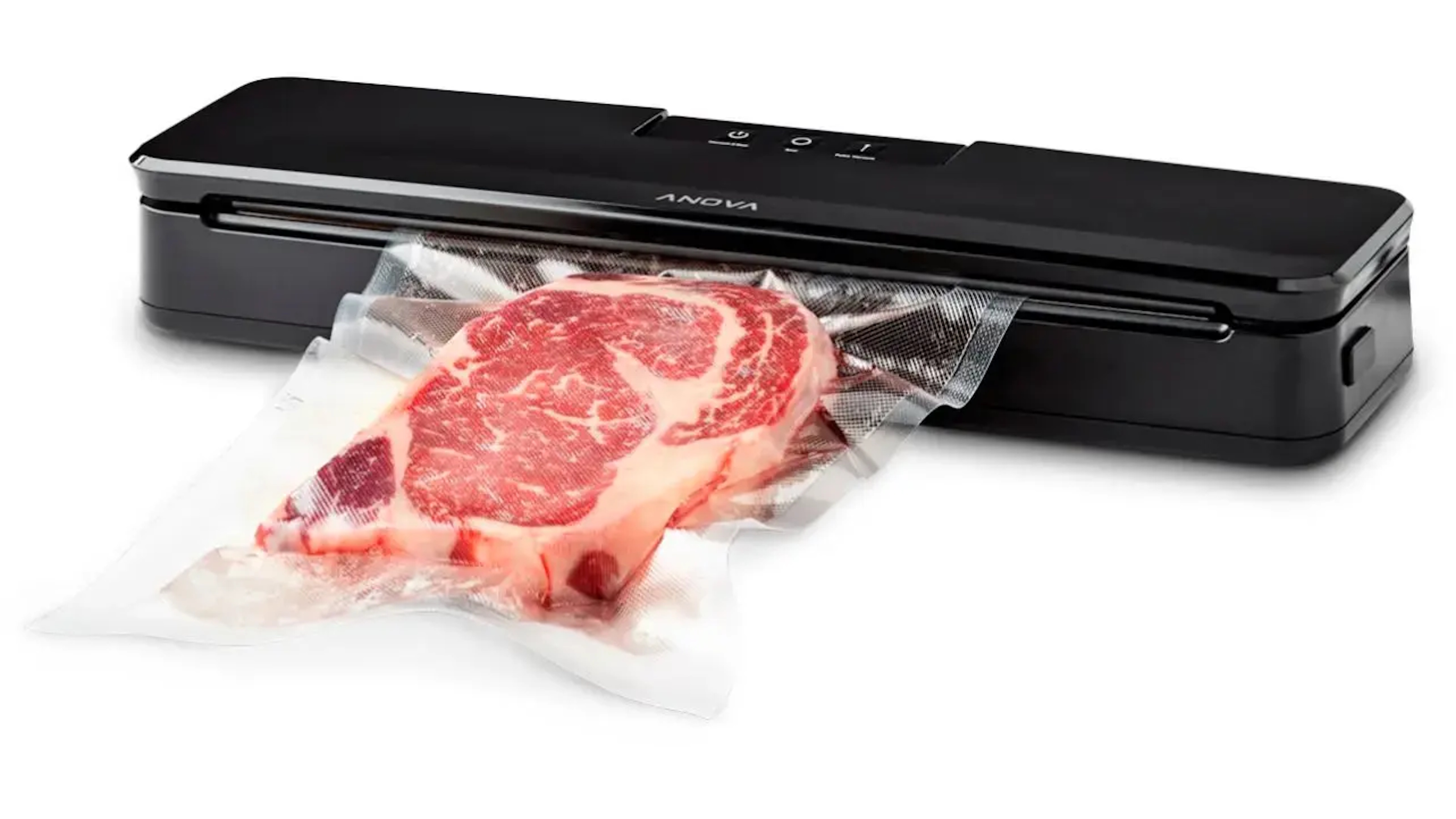
You can store this vacuum sealer neatly when not in use, and it works at various bag lengths, no matter how many people you're cooking for.
As well as its fast air extraction, the Anova Precision vacuum sealer is excellent for sous vide cooks because it dramatically cuts meal prep time. Using a vacuum sealer also helps extend the shelf life of food, minimizing waste and keeping ingredients fresh longer.
Some customers have encountered defective units and said the instructions could be more straightforward, but overall it's a great vacuum sealer. Even those not particularly tech-savvy have found it easy to operate. Users love it because it's convenient, affordable, and practical.
The best vacuum food sealer for bulk food storage
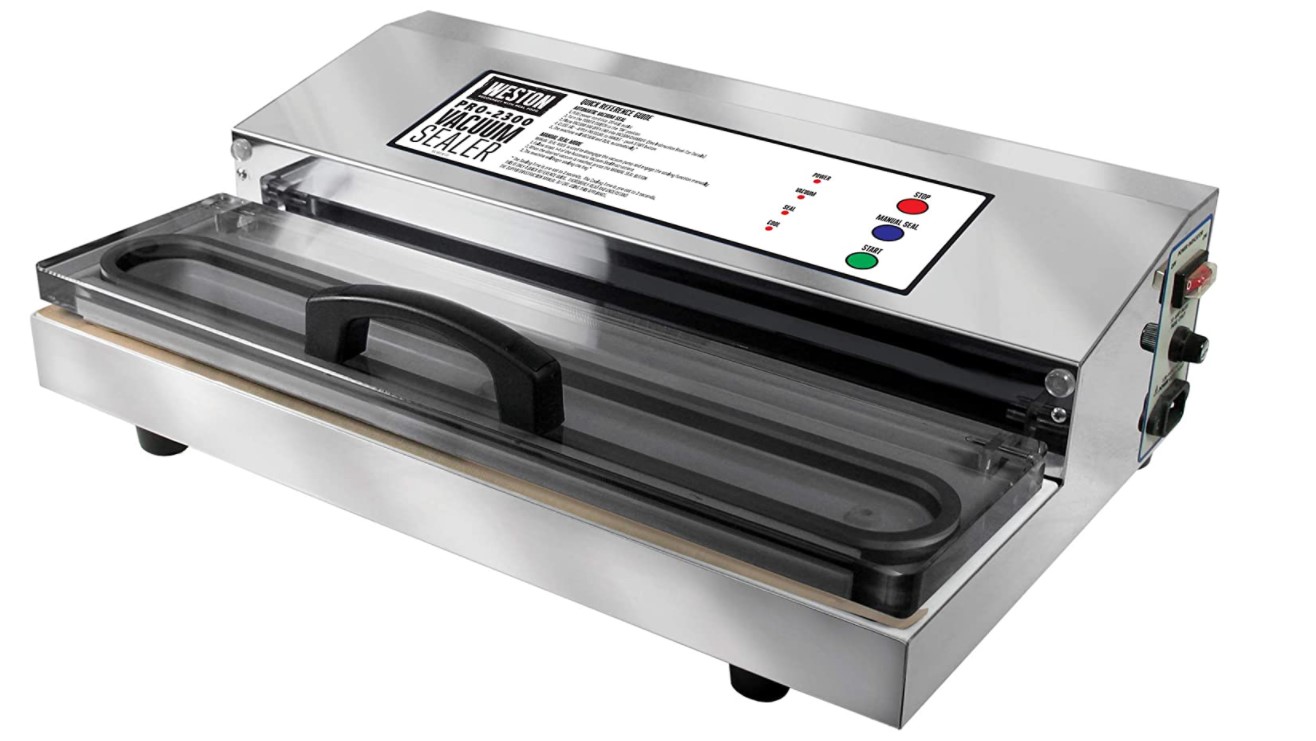
The Weston Pro 2300 vacuum sealer is ideal for bulk shoppers. Its powerful motor and wide sealing bar make it perfect for sealing large items, such as meats, game, and fish.
This sealer accommodates storage bags up to 15 inches wide, and the see-through acrylic lid allows you to make sure that the bags are aligned correctly during the sealing process. You also can control the vacuum pressure, which is helpful for different types of food.
Although it weighs 22 pounds, the Weston Pro 2300 is built to handle various sealing tasks and consistently delivers strong seals over time. Despite its weight, its professional capabilities make it a worthwhile addition for those with ample counter space.
The heavy-duty construction and design of the Weston Pro 2300 make it easy to maintain, while the bolted-together components enhance its durability. You'll find it easy to use whether you're a beginner or an experienced user. While opinions may vary regarding its value for money, heat resistance, and size, many customers believe this vacuum sealer is a fantastic investment for anyone serious about food preservation.
The best handheld vacuum food sealer
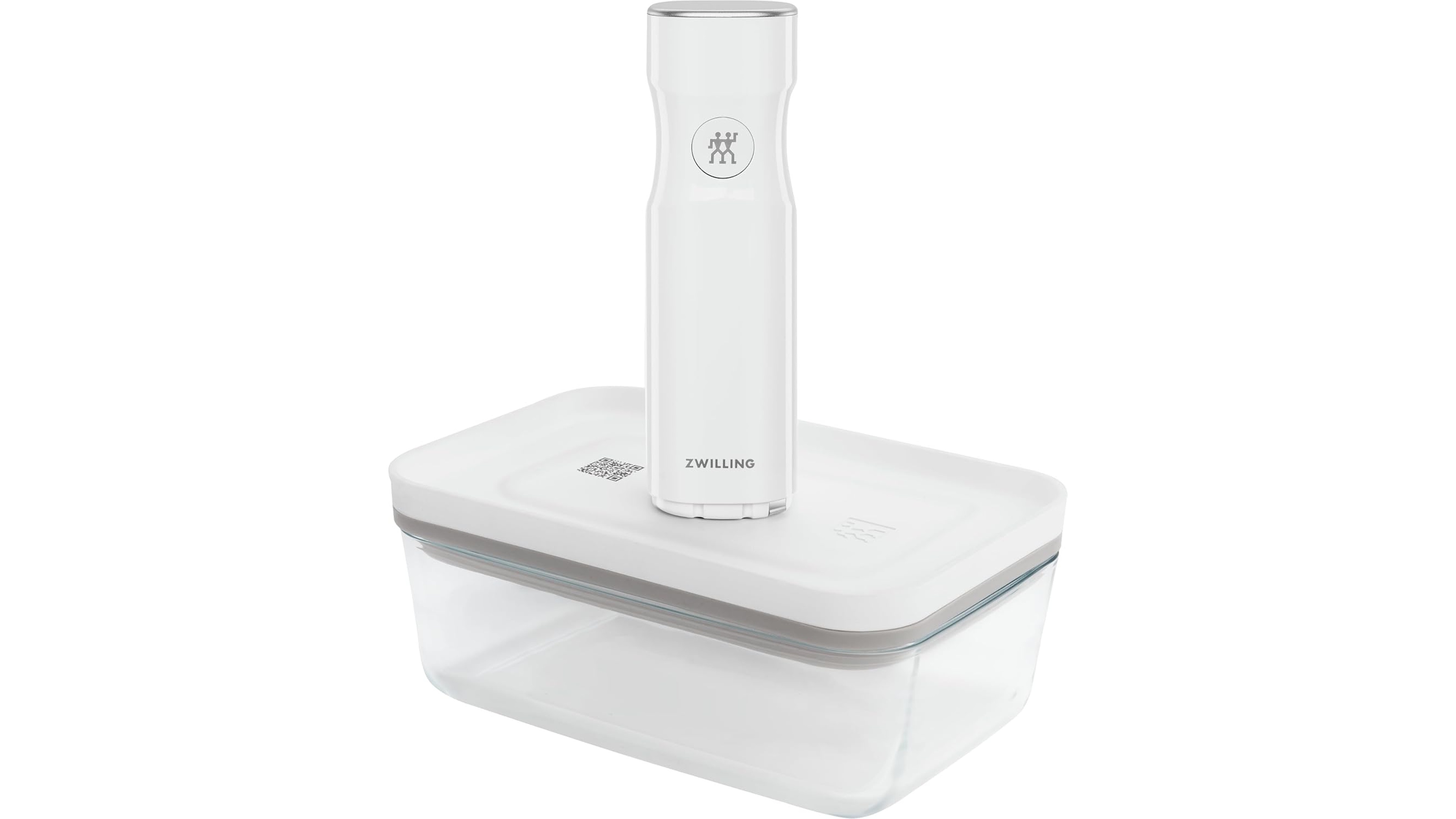
Zwilling Fresh & Save is an eco-friendly, space-saving handheld vacuum sealer for reusable bags and containers. This technology promises to keep food fresh five times longer than traditional non-vacuum storage methods. It helps preserve food flavors and nutrients while preventing freezer burn. You can vacuum seal quickly, quietly, and easily with this compact, cordless vacuum pump, which functions similarly to a countertop sealer but with less power.
The starter set also lets you choose between borosilicate glass and BPA-free polypropylene plastic containers.
As a helpful feature, the Culinary World app notifies you when your food is approaching its expiration date.
Fresh & Save's vacuum sealer effectively keeps food fresh for weeks without freezing, and most reviewers consider it a worthwhile investment for efficient food storage.
The best vacuum food sealer for versatility
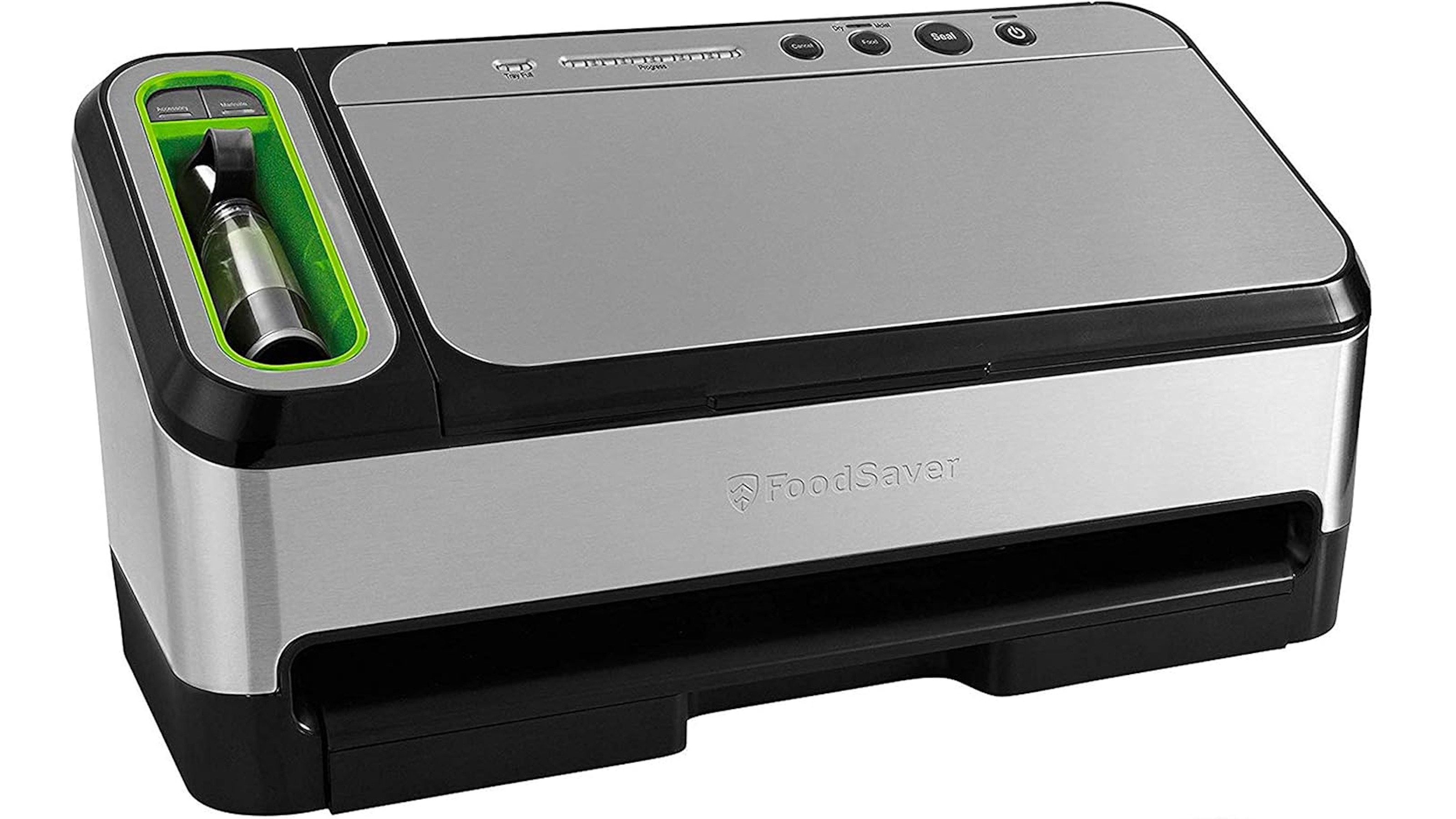
The FoodSaver V4840 2-in-1 Vacuum Sealer Machine combines standard vacuum sealing with a handheld option, making it perfect for those who need a versatile kitchen tool. With this machine, meat can stay fresh in the freezer for up to three years.
The V4840 features automatic bag detection—simply place the bag in the chamber, and the machine takes care of the rest. It also includes built-in roll storage and a cutter, allowing you to create custom-sized bags. LED lights guide you through the vacuum sealing process.
It also comes with a retractable handheld sealer for sealing FoodSaver zipper bags and Fresh containers, removing the need for extra attachments. The pull-out drip tray and dishwasher-safe components help keep your countertops clean.
The best vacuum food sealer for beginners
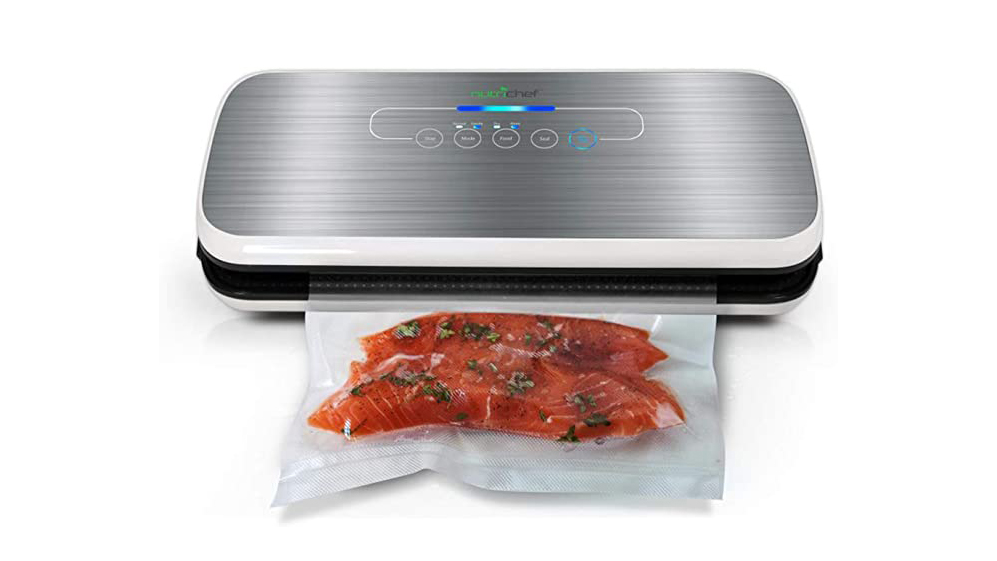
The NutriChef Vacuum Sealer features minimal soft-touch buttons, making it user-friendly for those new to vacuum sealing and sous vide cooking.
The sealer includes a waterproof and reusable wine stopper cork, five medium vacuum bags, and an extra-long vacuum bag roll. The device is easy to wipe down and sanitize, even when unplugged, making it ideal for sealing food items that may leak.
Many customers appreciate the vacuum sealer's ease of use and value for money, and others commend its compact design. However, reviews are mixed regarding its build quality and suction power.
The best vacuum food sealer for accessories
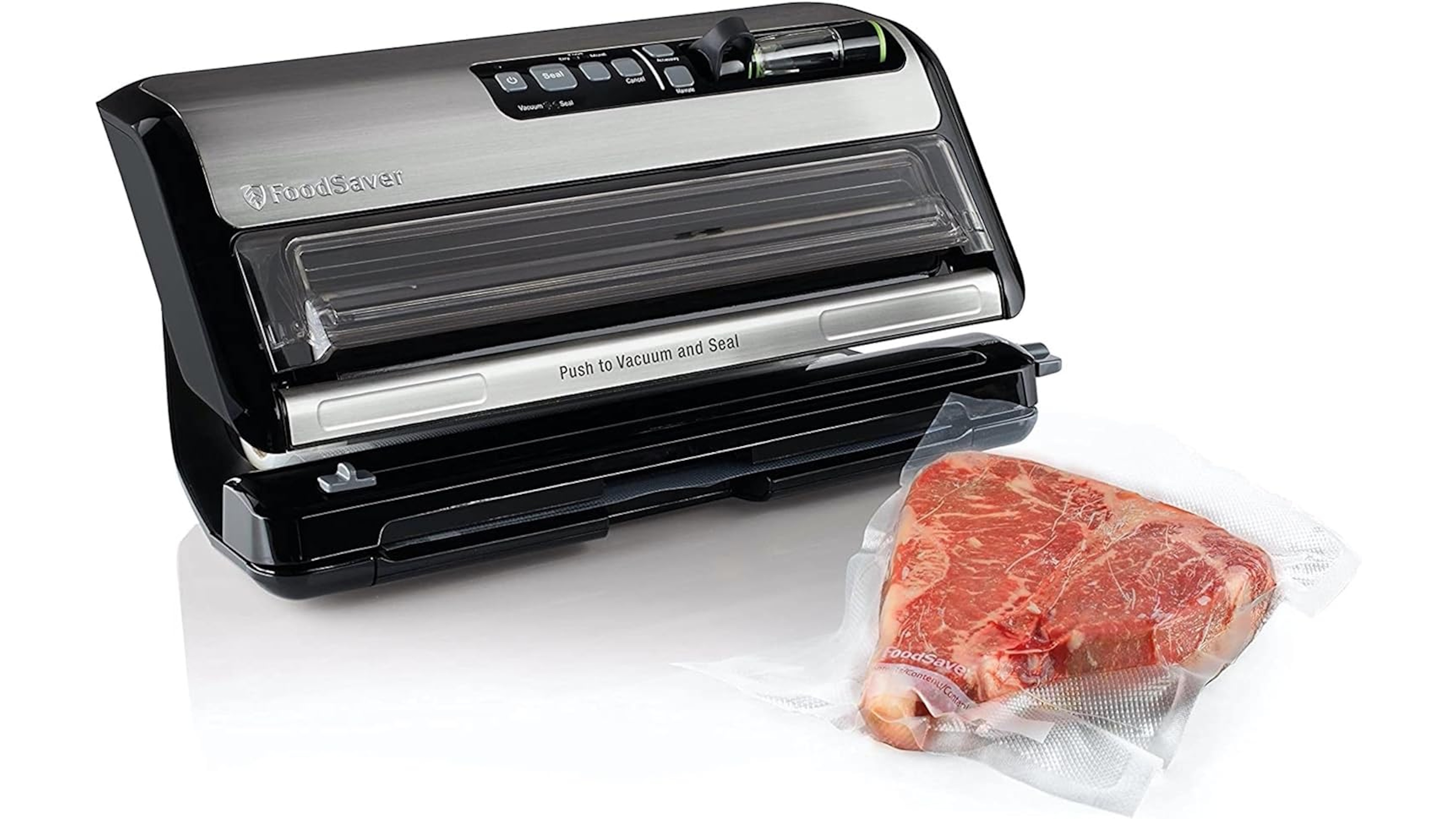
The FM5200 Series 2-in-1 Vacuum Sealer features built-in roll storage, a cutter, and a handheld zipper bag sealer. This streamlined bag-making process saves you 50% on steps and reduces roll waste by 30%.
You can easily store meat in the FoodSaver freezer for up to three years without worrying about freezer burn. Leftovers, meals, and fresh produce can also stay fresh for weeks, minimizing spoilage. The express bag maker includes a secondary heat-sealing bar that automatically prepares the next bag, cutting down bag preparation time by 50%.
A standout feature of this model is its vacuum window, which provides precise sealing control. The open roll storage design lets you know when to change the rolls. With the vacuum and seal bar, air is removed to prevent spoilage, and LED indicators guide you through the process.
The dual heat sealing strips ensure an airtight seal and come with a 5-year limited warranty. A removable drip tray also catches spills, making cleaning easy.
The best energy-efficient vacuum food saver
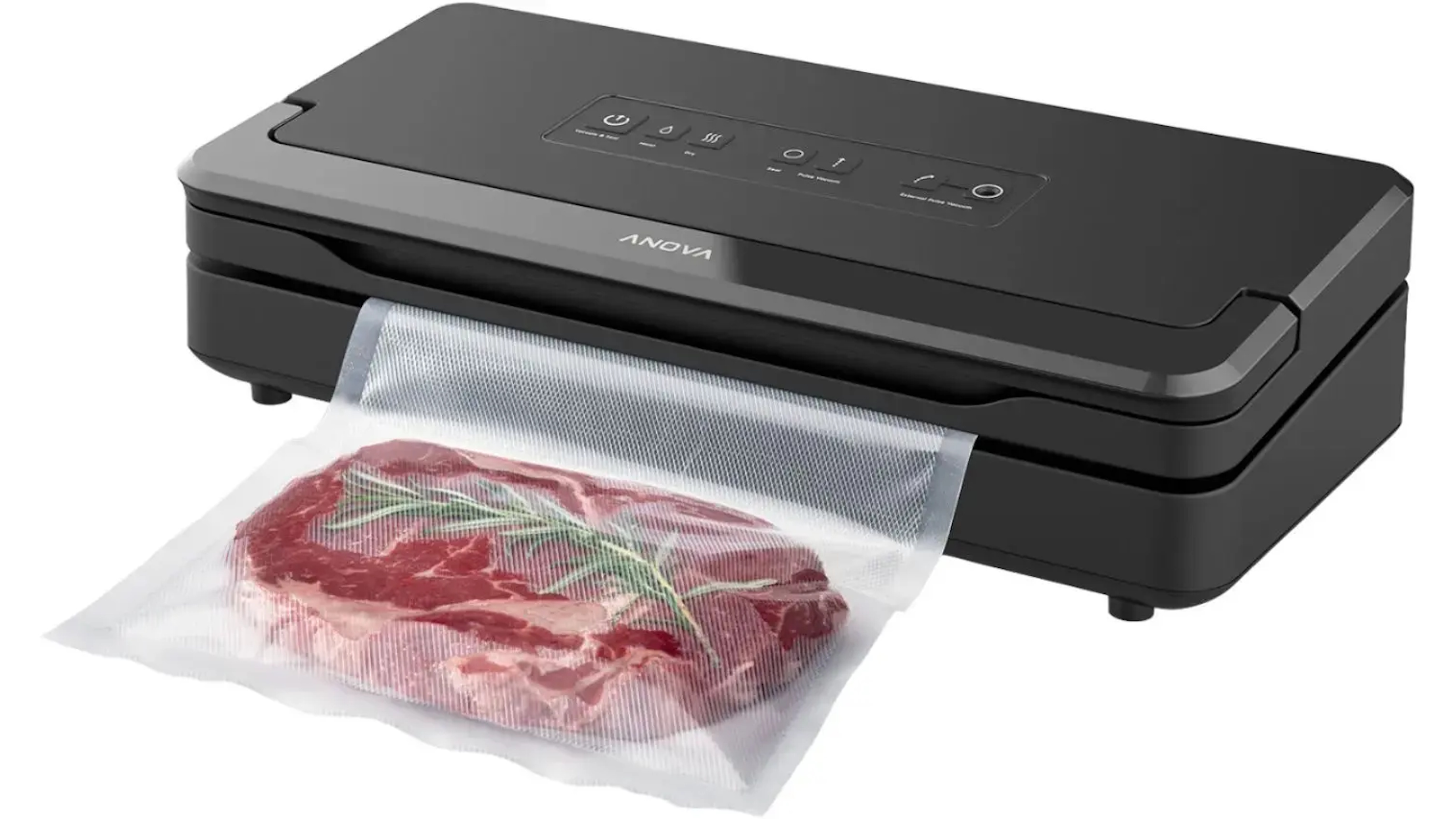
In terms of functionality without compromise, Precision Vacuum Sealer Pro is an excellent choice for eco-conscious users. Its powerful vacuum, double sealer, cutter, and accessory port are great for sealing wet foods.
Low-pressure vacuums seal even the juiciest foods with an airtight seal. The sliding cutter makes it easy to seal. Users say it's compact and easy to use, and anyone can set it up and use it, even if they're not tech-savvy.
Although some users have reported that the vacuum doesn't always remove all the air, the double seal keeps food fresh.
The best vacuum food sealer for specialty items
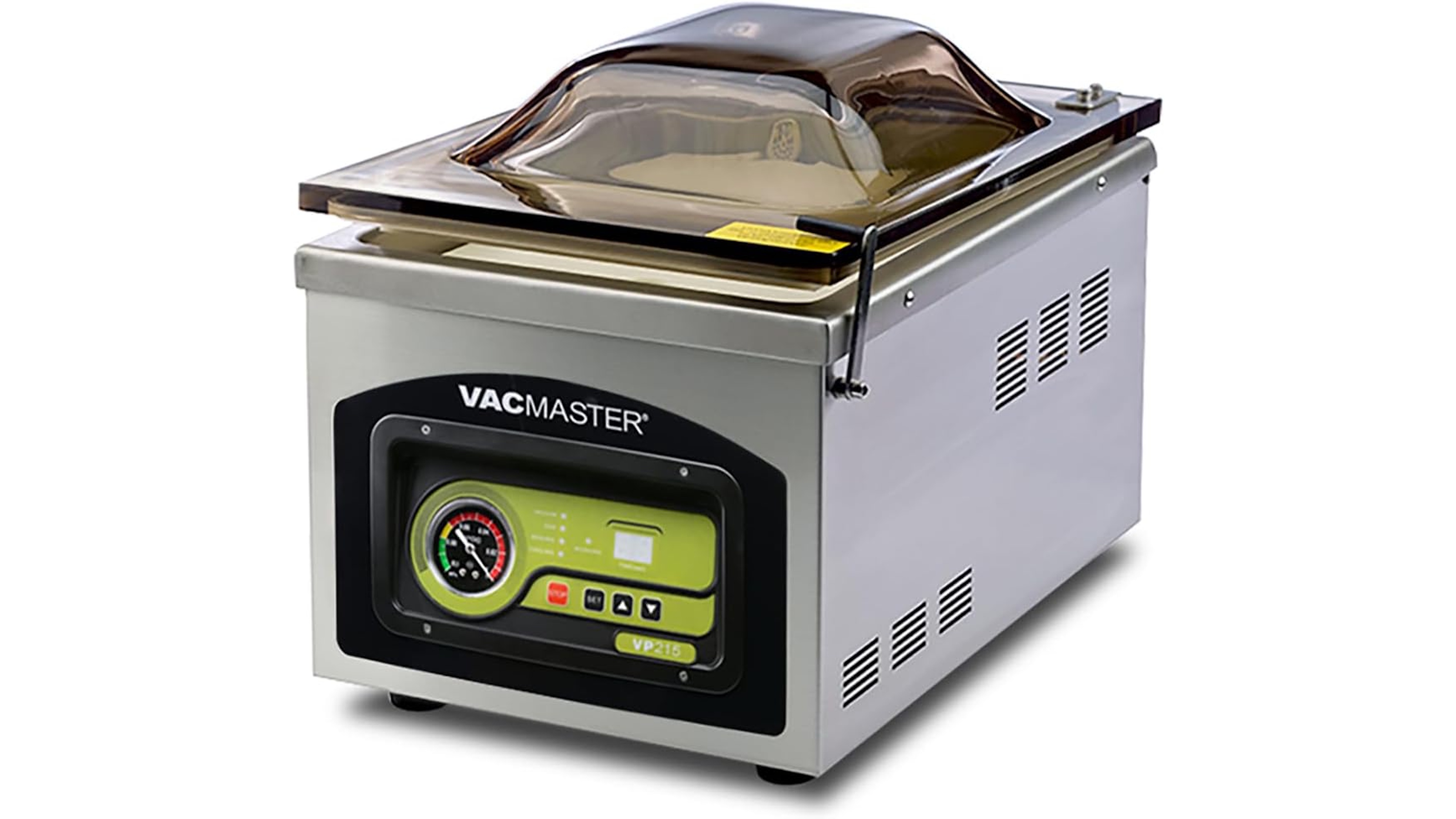
This chamber vacuum sealer makes it easy to seal liquids, marinades, pastries, and soft foods. It has a one-touch control system, so getting a perfect vacuum and seal is easy. With the stop button, you can seal a bag fast, and it opens automatically afterward.
With its compact design, you can store and transport it even if you don't have much storage space. You can vacuum-pack soups, sauces, and marinades and enhance flavors by marinating and infusing cocktails with the VacMaster, which is compatible with 10" x 13" bags.
Sealer dimensions are 14" x 20" x 15", with a chamber size of 11.25" x 15.25" x 5". The 1/5 HP oil pump allows continuous use despite weighing 84 lbs.
Users have praised the vacuum sealer for its excellent performance and seal quality. Its stainless steel design and affordability of compatible bags make it a favorite for low-moisture items. Although it is somewhat heavy and bulky, many believe it is a worthwhile investment because of its efficiency and ease of use, resulting in significant food savings.
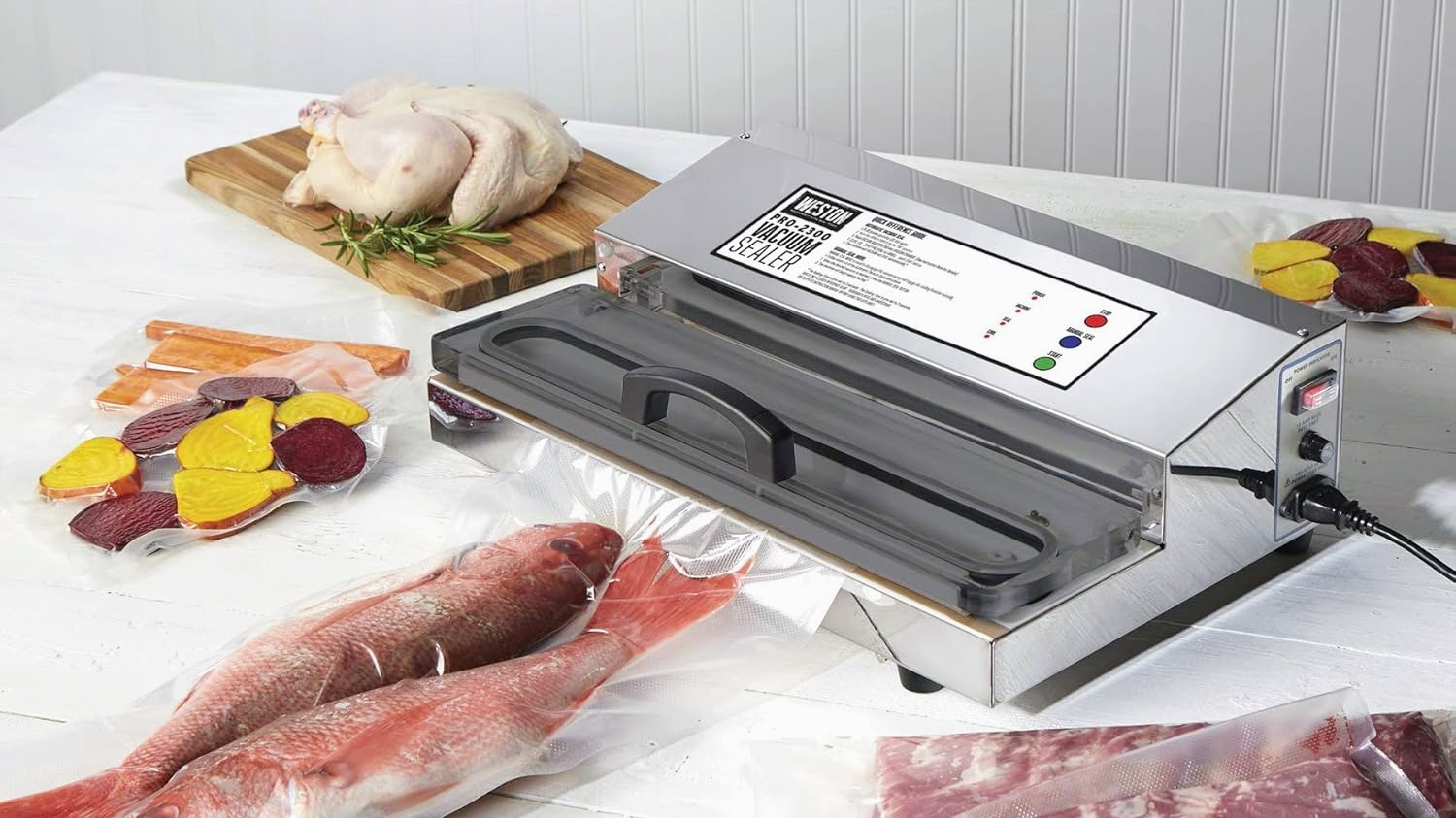
How to choose the best vacuum food sealer for you
A vacuum food sealer keeps food fresher, reduces waste, and saves money. Removing air from the packaging, these devices help extend the shelf life of perishable items like meats, fruits, vegetables, and leftovers. There are tons of vacuum food sealers, so choosing the right one can be challenging. Here are some things to keep in mind.
Types of Vacuum Sealers
External (or suction) and chamber sealers are two types of vacuum food sealers. External sealers are the most common and affordable models, so they're suitable for everyday use at home. The sealer removes air from a unique bag and seals it with heat. It's compact and versatile, perfect for small to medium food portions.
As for chamber sealers, they're bigger and more powerful and usually used in commercial settings. They seal food in an enclosed chamber, so they're perfect for bulk sealing, liquids, and delicate stuff. Despite being more expensive, chamber sealers are more durable and better controlled.
If you're a home cook who seals food occasionally, you'll probably be okay with an external sealer, but if you plan to seal often or in large quantities, get a chamber sealer.
Sealing Strength and Versatility
When selecting a vacuum sealer, look for one with strong suction power, usually measured in inches of mercury (inHg). A higher suction power (15–25 inHg) ensures efficient air removal, keeping food fresher for longer. Also, check the sealer's ability to handle bags of different sizes and materials. Some models support reusable containers, jars, and canisters for added versatility.
Ease of Use and Maintenance
Your experience can be way better if you have user-friendly features. For instance, automatic sealers detect bags and start sealing without much effort, while manual options give you more control. Some models have settings for delicate foods, wet stuff, and marinated stuff.
Look for models with removable drip trays to make cleaning easy. Dishwasher-safe accessories can make clean-up even more straightforward.
Bag Compatibility and Cost
Many vacuum sealers need specific bags or rolls, so you must pay more in the long run. Some sealers work with generic bags, usually cheaper than proprietary ones. Check whether it works with standard bags or if you must buy specific ones from the same company.
Budget
Determine your budget and pick a vacuum sealer that balances cost and functionality.
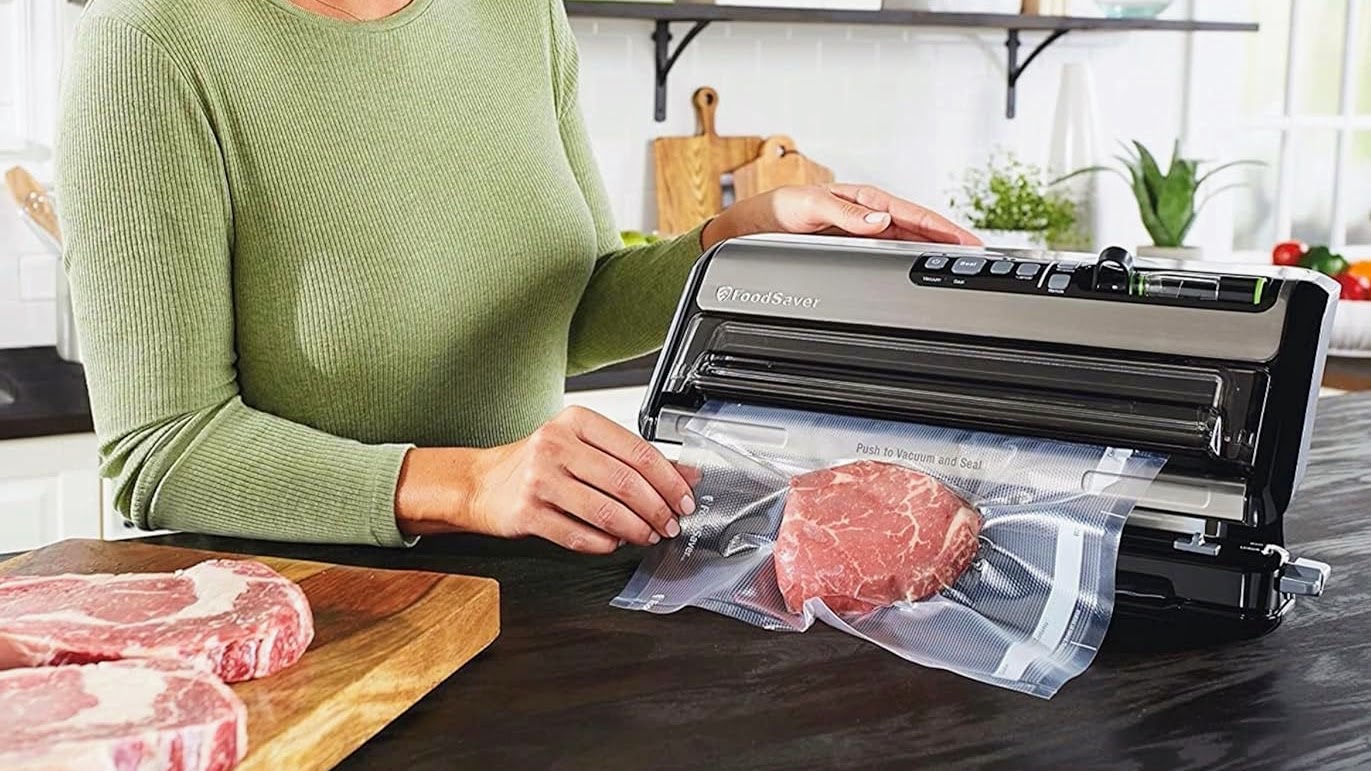
Vacuum food sealer FAQs
How do external vacuum sealers compare to chamber sealers?
Home kitchens usually use external vacuum sealers. They work by removing air from a specially designed bag that's then heated to seal it up. These sealers work outside the machine, so they're easy to use, but some foods, especially liquids, may not be adequately sealed.
On the other hand, a chamber sealer uses bags in a sealed chamber to seal. This method removes air from the entire chamber, making it easier to seal liquids, marinades, and delicates. The seal is stronger, and soft foods don't get crushed.
External vacuum sealers tend to be cheaper and more compact for home kitchens with limited space. Prices typically range from $50 to a few hundred dollars. On the other hand, a chamber sealer is more expensive, starting around $300 and increasing a lot. They also take up more counter space, which some users might not want.
Chamber sealers are more versatile and robust than external sealers, so they're perfect for bulk sealing and commercial use. They can fit a lot of bag sizes and types, so you can be more creative with your food storage. Compared to external sealers, which are easier to use, they're perfect for occasional use.
What makes vacuum sealers good for sous vide cooking?
By eliminating air, vacuum sealers ensure the food is fully immersed in water, making it cook evenly. If there are air pockets in the food, it can affect the texture and doneness.
The vacuum seal also lets marinades and seasonings penetrate the food more effectively. By drawing flavors into meat and vegetables, vacuum sealing makes them taste better. This is great for proteins since it enhances taste and tenderness.
If you prepare fish or other aromatic ingredients sous vide, it can sometimes produce strong odors. However, vacuum sealers ensure food is tightly sealed so odors don't escape during cooking.
Also, vacuum-sealed bags are compact and easier to store in the fridge or freezer. It helps with meal prep, as it allows for efficient organization. Vacuum-sealed foods also don't get freezer burn, so they stay fresh for a long time.
What's the average price range for s high-quality vacuum food sealer?
You can find a lot of vacuum food sealers for different prices. A quality model usually starts around $125, which provides essential features for safely storing food. There are cheaper machines out there, but they often compromise on quality, which is crucial to effective food preservation. For game hunters, high-end models can be worth it. For most home kitchens, a vacuum sealer priced around $125 offers a good mix of performance and affordability.
Budget vacuum sealers, priced between $50 and $100, offer basic functionality like suction and sealing but don't have advanced features like multiple sealing modes. If you're in the mid-range ($100 to $200), you'll find models with better suction, moisture control, and extra conveniences like cutters or roll storage. They're a good choice for regular use.
External sealers priced between $200 and $300 have premium features, improved durability, and automation, making them ideal for serious cooks.
For commercial use or serious home cooks, chamber vacuum sealers are usually more expensive, but they work well. Prices usually start around $300 and can go up to $1,500. For home users who want more power and versatility, entry-level chamber sealers are between $300 and $600. Professional models costing $600 and up have bigger chambers and enhanced durability, so they're great for commercial uses.
Is suction power important in a vacuum food sealer?
Air is evacuated from bags in vacuum food sealers so they don't oxidize and spoil. A higher suction power removes air from the bag, creating a tight seal around the food. In particular, this is important for perishables since air can spoil, freeze, and ruin flavor and texture faster. It's usually best to have a suction power between 15 and 25 inches of mercury (inHg).
Foods with a lot of moisture, like marinated meats or juicy fruits, can present a challenge. A lack of suction can result in poor seals or malfunctioning machines when liquid gets drawn into the sealing area. You'll always get a good seal with models with higher suction power.
A vacuum sealer with strong suction power is usually built to withstand frequent use. Investing in a sealer with adequate suction power means you're less likely to encounter performance issues in the future.
Is it okay to use generic vacuum bags with my sealer?
Sandwich bags don't have enough strength to withstand vacuum food sealers' pressure and heat, so it's not a good idea to vacuum seal them. The vacuum sealer bags are designed with textured interiors to conform closely around food and effectively remove air. The great thing about vacuum sealer bags is that they're reusable and eco-friendly, and you'll save money over time. You can buy rolls of sealer bags that work with different devices, and many food sealer machines come with bags tailored for their operation.
Most external vacuum sealers work with standard vacuum bags, including generic ones. Check your vacuum sealer's specs because some high-end models might perform better with their bags. There's a big difference in quality between generic vacuum bags; while they can be affordable for frequent food sealers, lower-quality versions may not remove air or create a proper seal, causing leaks. For durability and effectiveness, ensure you get BPA-free bags specifically designed for vacuum sealing.
Always prioritize food safety when buying generic bags. Make sure they're food-grade and can be used sous vide. Regular storage bags won't hold up under vacuum pressure, so they're unsafe. While generic bags can be cost-effective, you'll get the best results by choosing high-quality, compatible bags.
Do vacuum sealers come with any extra accessories or features?
You can get a vacuum sealer starter kit with a bunch of vacuum bags, rolls, or canisters. A high-end vacuum usually has a cutter and built-in roll storage. This feature allows vacuum roll bags to be stored and cut to the desired size, streamlining the sealing process. You get the right bag size for your needs and reduce waste.
You can seal different types of food with different vacuum sealers. For instance, a "moist" setting adjusts the sealing process to accommodate foods with high moisture content so the liquid doesn't get sucked in. There are also settings for delicate foods and marinated foods.
Canister and jar attachments are available for some vacuum sealers, making them perfect for preserving dry goods, liquids, or vacuum-sealing jars for longer shelf life.
Several models come with accessory ports connecting additional attachments, such as handheld and canister vacuum sealers.
What's the best way to maintain my vacuum food sealer?
You should clean your vacuum sealer thoroughly after each use. Start by wiping the exterior with a damp cloth to remove food particles or spills. Avoid abrasive cleaners, as they can scratch or damage the seals. Use mild detergent and a soft cloth for the sealing area. Before storing the machine, make sure all parts are completely dry.
Inspect the sealing gaskets periodically for wear, cracks, or damage to maintain a strong vacuum seal. If you see any issues, replace the gaskets right away. There are replacement parts available from many manufacturers, so you can keep your sealer looking good.
Keep your vacuum sealer in a cool, dry place when not in use. Avoid storing it in high humidity or extreme temperatures, as these conditions can damage it. Keep the sealer upright, and don't stack heavy items on top of it.
You need high-quality, compatible vacuum bags to avoid clogs and malfunctions. Don't use regular storage bags or non-compatible options, as they can damage the machine.
Refer to the manufacturer's guidelines for cleaning, storing, and using your model. Each model may have specific recommendations.
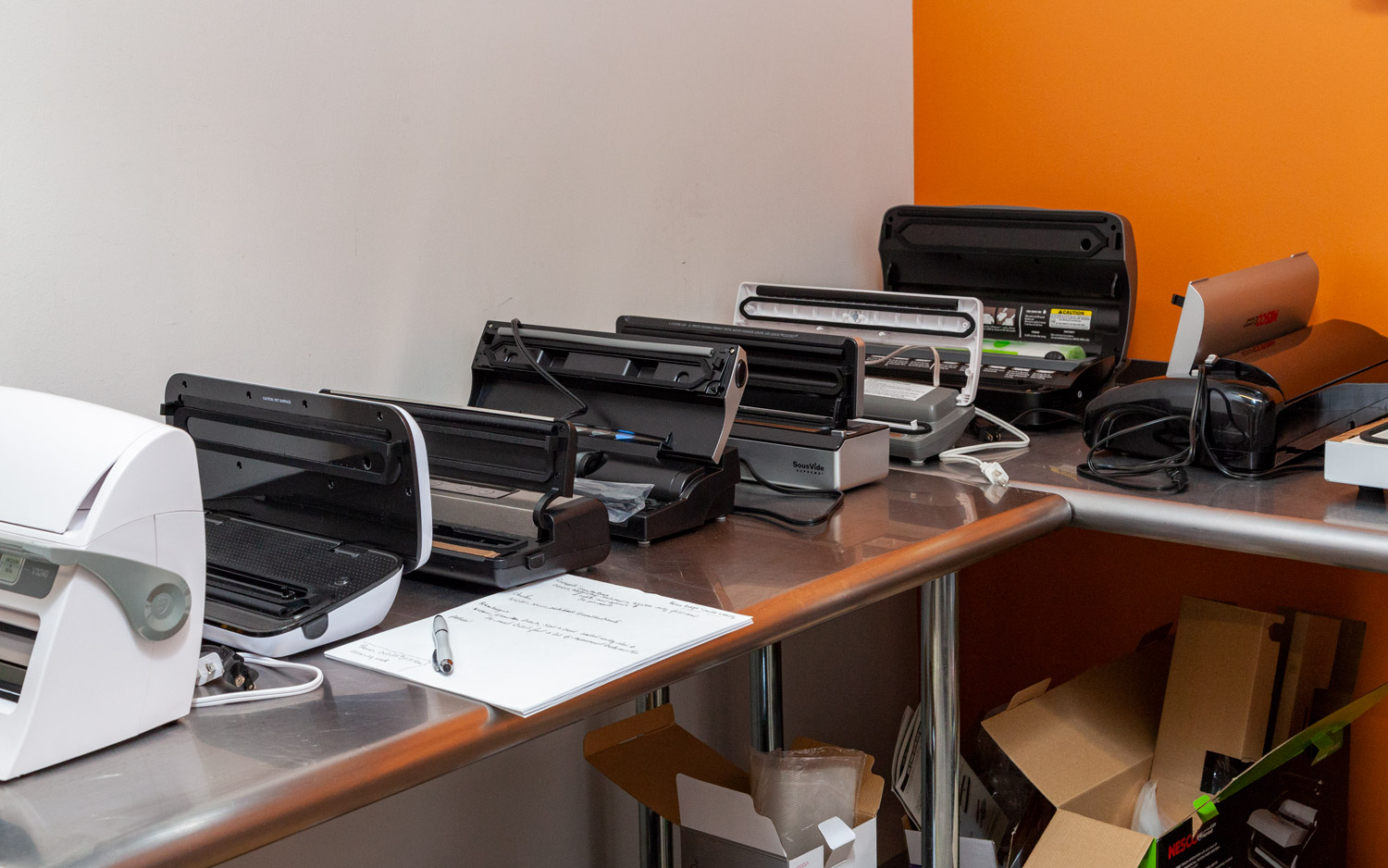
How we test the best vacuum food sealers for this guide
We've got you covered when figuring out the best vacuum food sealers. We’ve been testing food saver machines for over four years, and we’ve researched and reviewed other small appliances like food processors and turkey fryers for even longer. We also use vacuum sealers when testing sous vide machines, so we know what to look for.
We scoured consumer reports to check whether there were any safety issues and contacted associations like FoodSave.org and the Food and Agriculture Organization of the United Nations (FAO) to give you expert advice on how best to store food and how long you can keep it before it spoils.
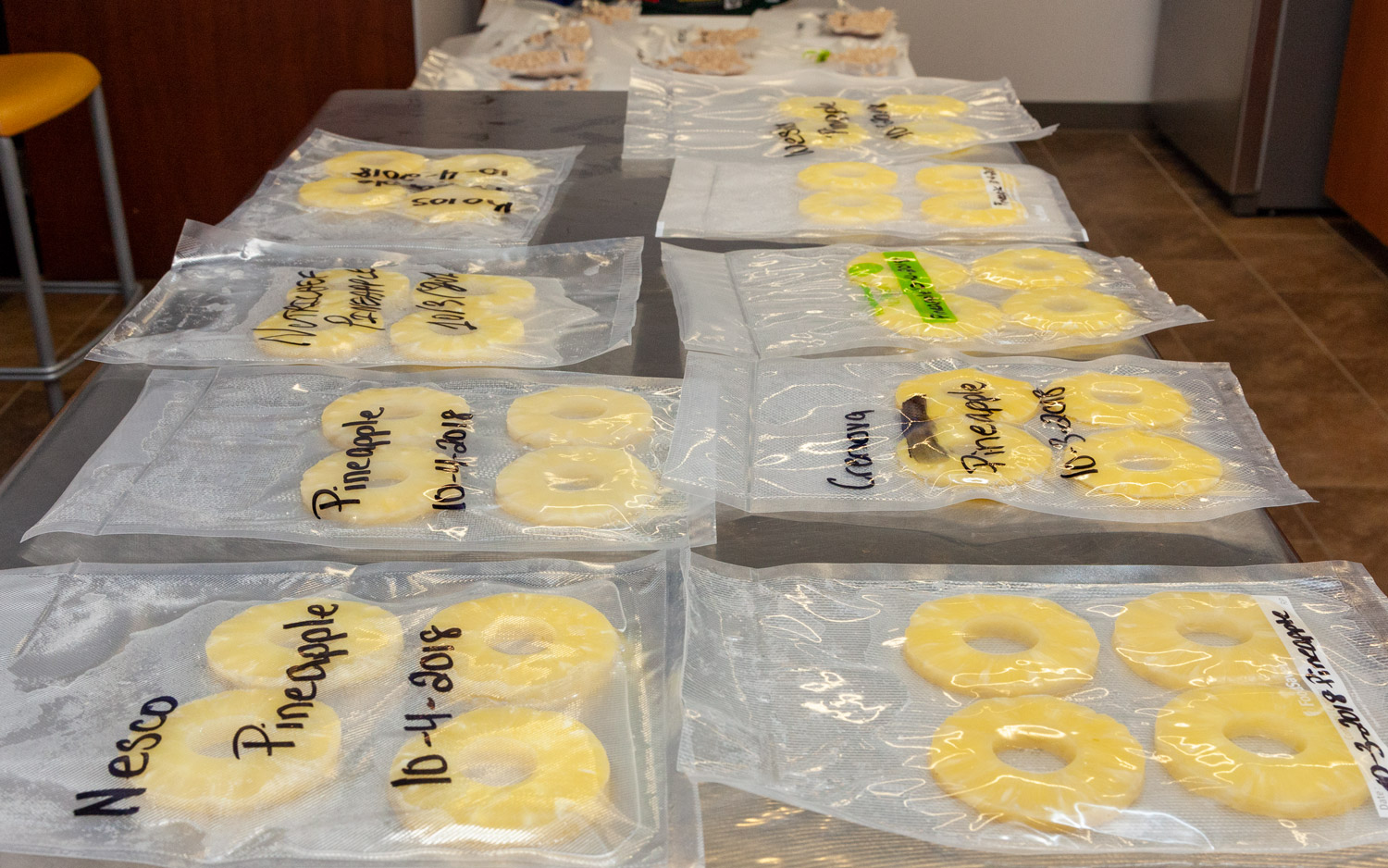
We put the best vacuum sealers that we tested through a rigorous process to give you peace of mind. We spent three days testing the food saver machines with different types of food, including hamburger patties, chicken breasts, cereal, slices of bread, and pineapple rings. We chose pineapple rings to see how the sealers fared with wet foods. This is so we could observe how tight the seals were and determine whether the suction was effective. We placed the vacuum-sealed meats in a freezer and followed them over several days.
You can rest assured that we put the vacuum sealers through their paces. Our testers looked for issues like discoloration, air bubbles, freezer burn, and ice crystals inside the bags. We lined them up side by side to observe any minor differences. We checked whether the bags laid flat, an essential consideration if fridge and freezer space is at a premium. Our testing process took place over several days so we could spot any issues that didn’t develop immediately. While the seal may appear tight at first glance, air bubbles can become visible after resting, so we checked for that.
On top of all that, we checked in with people who use vacuum food sealers for short-term and long-term storage to gather their insights and get a real-world perspective. We know that value for money is crucial so we factored in the cost of each machine, what is included, and the warranty to give a rounded view.
